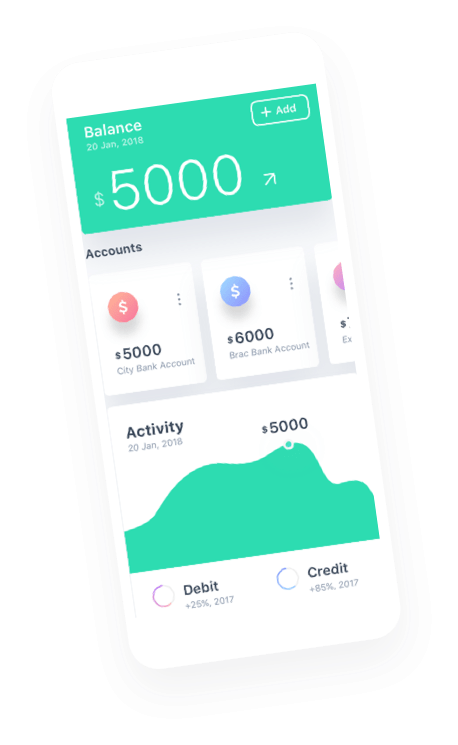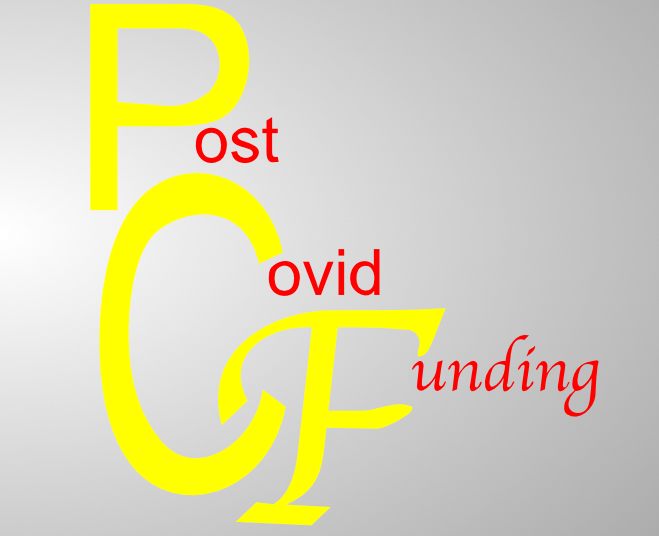In 2020 the world changed
Business Funding Did, Too
Post COVID Funding
Funding for the new normal
Post COVID Funding Options
Post COVID Funding Options
SMB Funding after the Coronoavirus Pandemic
An understanding of post-COVID business loan options is best informed by understanding the types of funding options that are generally available to small-to-medium-sized businesses (SMBs), generally. An understanding of these funding options is necessary to contrast them to the “new normal”. When we talk about SMB funding, we are not addressing start-up funding, but rather loans and lines of credit available for already-established businesses.
Traditional Funding
Traditional bank funding is what people generally think about when they think about SMB loans. Many, if not most small and medium sized business bank loans are issued using Small Business Administration (SBA) guidance or approval. The reason SBA loans are so common is that, when a loan conforms to the SBA guidelines, the Administration will guarantee some portion of the loan to the lender in case of default by the borrower.
Term Loans
Term loans are so called because the full amount of the loan is funded on approval, the total of the payback is calculated based on the term of the loan, and then the total payback is broken into equal monthly installments. As an example, if a small business was approved for an installment loan in the amount of $150,000, with an interest rate of 8% and a term of 10 years, the total payback would be $220,000 and the monthly payment would be around $1,800.
Lines of Credit
Many businesses are cyclical in nature, both in sales and in revenue, and often these cycles don’t match up. A business line of credit can be extremely useful for a business owner to smooth out the time disparities between when they need to spend capital and when they will see a return on those spends. Unlike a term loan, a line of credit loan is not advanced at the time of approval; rather the business owner will be given an upper limit that they can borrow, and then they borrow against the line when they need capital and pay down the line when they have revenue.
Traditional lending was significantly impacted by the coronavirus pandemic. Learn how the traditional lending space is evolving and how we can help you secure traditional term loans and lines of credit.
Alternative Lending
Alternative funding vehicles are so called because they are an alternative to traditional bank loans. That’s not to say that banks themselves don’t participate in alternative lending; they do. However most alternative lending is done by non-bank financiers. Alternative lending can take many different forms. Here are a few:
Asset Based Lending
Asset Based Lending, or ABL, allows SMBs to utilize a variety of assets to secure a credit line. ABL allows those businesses with a reasonably credit history to secure funding secured through some combination of accounts receivable, on-hand inventory, real estate holdings, and other fixed assets or equipment. ABL lines are generally between $1 million and $20 million, and they grow in lock-step with the business. These lines of credit are attractive to established businesses that are hitting a growth wall and need funding, want to shore up operations prior to being acquired, or are in a position to acquire a competitor to but have either exhausted their available traditional bank line or are trying to finance something outside of their traditional lender’s wheelhouse. Find out how you can still secure ABL in the coronavirus economy!
Equipment Leasing
Upgrading equipment can often lead to an increase in both top-line revenue and increased profit margins. Because banks are rarely comfortable financing a depreciating asset, which equipment by definition is, often businesses have to save up for years or simply make do with antiquated equipment to perform their work. Equipment leasing allows a company to lease the updated equipment, and, hopefully, generate profits from the upgrades that more than pay the lease payment obligation.
Accounts Receivable Funding
Factoring, invoice discounting, AR Funding; this type of financing goes by many different names. Essentially, an alternative lender advances a business some percentage of their outstanding, credit-worthy receivables prior to those receivables being due from the customer. In factoring, the creditworthiness of the debtor to the client is more important than that of the client themselves. This allows the business owners to essentially “borrow” their customer’s credit history, to access cash sooner, and finance growth and operations. Factors generally assist with, or fully take over, accounts receivable collection as well, and are usually much better equipped than a small business owner to manage the process. This, in turn, leads to invoices being paid sooner, more visibility into the state of the business, and raises awareness of problem accounts much more quickly.
Lending Has Changed
The traditional and alternative lending landscape has changed significantly this year. These changes may affect your ability to secure funding. Reach out today, and get the experts in your corner.
Lending Has Changed
The traditional and alternative lending landscape shifted. Reach out today, and get the experts in your corner.
How We Can Help
The landscape of post-COVID traditional and alternative lending is in a constant state of flux.
Traditional Lenders
Traditional Lenders are faced with a situation that is possibly unequaled in their history; too many applications, too many government-backed programs, and not enough staff or knowledge to move through them at a reasonable rate.
Many traditional lenders aren’t even looking at loans that are not directly tied to the PPP or the Main Street Lending Program. Those that are do not have the time to put into difficult, questionable, or incomplete applications.
Traditionally, you could count on your local lending officer to review your application, and ask the questions they know that underwriting would ask, or clear up the red flags. Now, they just don’t have the time or resources to do so.
Finally, and arguably most importantly, we are are in the middle of a seismic shift in the business world. Industries that were fringe are quickly becoming mainstream, and industries previously considered ultra-low risk are being carefully examined as the spending habits of consumers and businesses alike change.
Alternative Lenders
Alternative lending has also changed drastically. Lenders that specialize in Asset-Based Lending have been forced to re-evaluate the value of their clients’ holdings, as well as the long-term viability of both the client and the industry. Equipment lessors must carefully consider the client’s ability to take advantage of the new equipment to raise revenue, as this is directly tied to demand in the client’s industry. Factors must re-evaluate debtors to their clients that were once considered to be extremely low risk. What’s more, alternative lenders are often debtors themselves; borrowing the money they lend to their business clients. As their lines of credit are tightened, they have less available capital to lend, forcing them to consider only the lowest-risk clients for funding.
Alternative lenders are also faced with the underlying shift in the marketplace, and for them evaluating the industries they are investing in is arguably even more important than it is for traditional lenders.
Have Questions?
Still confused about your options? Would you like some clarification before we get on the phone?
Have Questions?
Still confused about your options?
There will be a “New Normal”
The lending space will of course find its equilibrium. Consumer habits will stabilize, the winners and the losers will become clear, and underwriting will eventually return to business-as-usual. For small and mid-sized businesses that don’t have “eventually” to wait, however, they must be prepared to convince a traditional or alternative lender that their industry, offering, and business is a safe bet in the post pandemic world. This is something most business owners simply don’t know how to do. The good news is, we do.
The team behind Post-COVID Funding has deep roots in the lending space. We have been lenders, so we know not just their decision trees, but also their concerns, fears, and flash-points that will make them quickly back away from a deal. Until the “new normal” becomes “business as usual”, you need an advocate that understands the lending space to help you evaluate your options, present your business case, and answer the tough questions that will come your way as you seek financing.
We are not here to sugar-coat anything for you, or tell you that access to capital in the immediate future is going to be easy. It is possible for many businesses, however, and we can help you evaluate if you are one of them. We won’t waste your time, or ours; we’ll tell you straight away if we don’t think we can get a deal done for you. If we believe that we can assist you in getting the funding you need to stay afloat, stabilize, or grow, however, you couldn’t have a better team in your corner.
It’s better to know the HOW than the WHY
We can’t tell you we know what lenders are looking for. They themselves are still figuring it out. When you can’t know the “why”, the “how” becomes indispensable. We know how to present a business. We know how to shop lenders. We know how to speak their language. We know the grueling, tough questions they are likely to ask you, and we can ask them first.
Yes, small and medium businesses can still get capital. Yes, you can still get funding for your next stage of growth, or to get you back on track. You just have to know the “how”.

It’s better to know the HOW than the WHY
We can’t tell you we know what lenders are looking for. They themselves are still figuring it out. When you can’t know the “why”, the “how” becomes indispensable. We know how to present a business. We know how to shop lenders. We know how to speak their language. We know the grueling, tough questions they are likely to ask you, and we can ask them first.
Yes, small and medium-sized businesses can still get capital. Yes, you can still get funding for your next stage of growth, or to get you back on track. You just have to know the “how”.
Find YOUR new normal
Our team of professionals can help you find your new cashflow equilibrium.
We will look at your individual situation; financial and business history, detailed projections, industry outlook, funding requirements, business volume and other factors. We will challenge your assumptions. We will ask you the hard questions now, when an incorrect answer won't cost you access to the capital your business needs to flourish.
We may recommend pursuing a traditional bank loan, and we can help you shop to the right lenders who are ready to do business. We may recommend that you leverage capital tied up in receivables, and find a factor that meets your business profile. We may match you with a company that specializes in funding businesses based on hard assets. First, however, we'll get to know your business, so we know how to advise you.
Find YOUR new normal
Our team of professionals can help you find your new cashflow equilibrium.
We will look at your individual situation; financial and business history, detailed projections, industry outlook, funding requirements, business volume and other factors. We will challenge your assumptions. We will ask you the hard questions now, when an incorrect answer won't cost you access to the capital your business needs to flourish.


